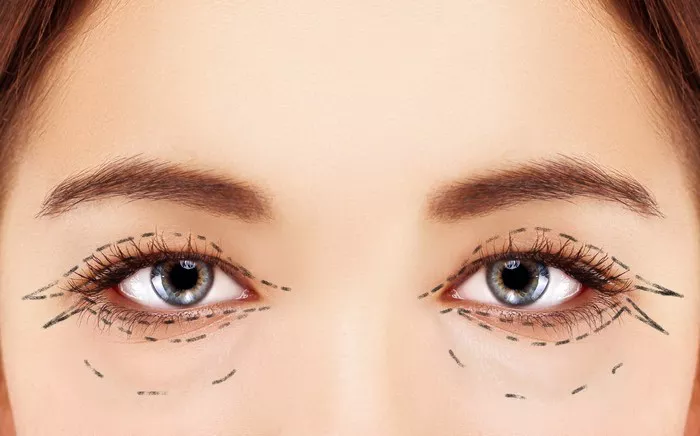blepharoplasty, commonly known as lower eyelid surgery, is a popular cosmetic procedure aimed at rejuvenating the lower eye area. Whether it’s to address under-eye bags, puffiness, or wrinkles, lower blepharoplasty can significantly enhance a person’s appearance. While the surgery itself is relatively quick, the healing process is a critical aspect that patients need to understand and prepare for.
In this comprehensive guide, we will delve into the details of lower blepharoplasty recovery, covering the typical healing timeline, potential complications, and tips for a smoother recuperation. Whether you are considering undergoing the procedure or have already had it done, this article will equip you with the knowledge to ensure a successful and comfortable healing journey.
Understanding Lower Blepharoplasty
Lower blepharoplasty is a surgical procedure designed to address cosmetic concerns in the lower eyelids. It involves the removal of excess skin, fat, and muscle, which may cause bags under the eyes or give a tired and aged appearance. The surgery aims to create a more youthful and rejuvenated look by smoothing out the lower eye area.
The Surgery Process
Lower blepharoplasty is typically performed under local or general anesthesia, depending on the extent of the procedure and the patient’s preference. The surgeon makes incisions either inside the lower eyelid (transconjunctival) or just below the lash line (subciliary). Through these incisions, excess fat and skin are carefully removed or repositioned to achieve the desired aesthetic outcome. Once the procedure is completed, the incisions are sutured, and the healing process begins.
Lower Blepharoplasty Recovery Timeline
The recovery period after lower blepharoplasty is a crucial time when the body heals and adjusts to the changes made during surgery. While every individual’s healing process may vary slightly, the following timeline provides a general overview of what to expect:
Immediately After Surgery:
Patients are usually allowed to go home the same day as the surgery.
The treated area will be covered with bandages and ointment to protect the incisions and promote healing.
The First Week:
Swelling and bruising are common during this stage.
Pain medication and cold compresses can help manage discomfort and reduce swelling.
Patients may experience some blurred vision, sensitivity to light, and tearing.
Two Weeks After Surgery:
Most of the swelling and bruising should subside by this point.
Patients can often return to work and resume light activities.
Stitches may be removed if non-dissolvable sutures were used.
One Month After Surgery:
The majority of the post-surgery effects should have resolved.
Patients can gradually resume more strenuous activities and exercises.
Three Months After Surgery:
Final results start to become apparent as the tissues fully heal and settle into their new position.
Incision lines continue to fade over time.
Potential Complications and How to Minimize Them
While lower blepharoplasty is generally safe, like any surgical procedure, there are potential risks and complications. Some of these include:
Infection: Proper wound care and following the surgeon’s post-operative instructions can significantly reduce the risk of infection.
Excessive Scarring: Minimize scarring by avoiding sun exposure, using sunscreen, and keeping the incision area moisturized.
Hematoma: This refers to a collection of blood under the skin and can be minimized by avoiding strenuous activities in the early stages of recovery.
Ectropion: A rare complication where the lower eyelid turns outward. Choosing an experienced surgeon can help prevent this issue.
Dry Eyes: Patients may experience temporary dryness, which can be managed with artificial tears and eye drops.
Tips for a Smooth Recovery
To promote optimal healing and achieve the best results, follow these tips during your lower blepharoplasty recovery:
Adhere to Post-Operative Instructions: Your surgeon will provide detailed guidelines for wound care, medication, and activities to avoid. Strictly follow these instructions to ensure a successful recovery.
Protect Your Eyes: Avoid rubbing or touching your eyes during the healing process to prevent complications and protect the delicate tissues.
Get Plenty of Rest: Adequate rest is essential for healing. Avoid strenuous activities and get enough sleep to allow your body to recover.
Maintain a Healthy Diet: Proper nutrition supports healing. Consume a balanced diet rich in vitamins and minerals to aid the recovery process.
Avoid Smoking and Alcohol: Smoking and alcohol consumption can slow down the healing process and increase the risk of complications. Refrain from these habits during recovery.
Conclusion
Lower blepharoplasty can be a transformative procedure that enhances the appearance of the lower eye area. Understanding the healing process and being prepared for the recovery journey is crucial for a successful outcome. By following post-operative instructions, taking necessary precautions, and being patient, patients can enjoy the benefits of lower blepharoplasty with minimal complications.
Remember that each person’s healing timeline may differ, and it’s essential to communicate any concerns or unexpected developments with your surgeon promptly. With proper care and guidance, you can achieve the rejuvenated look you desire and embrace the confidence that comes with it.

